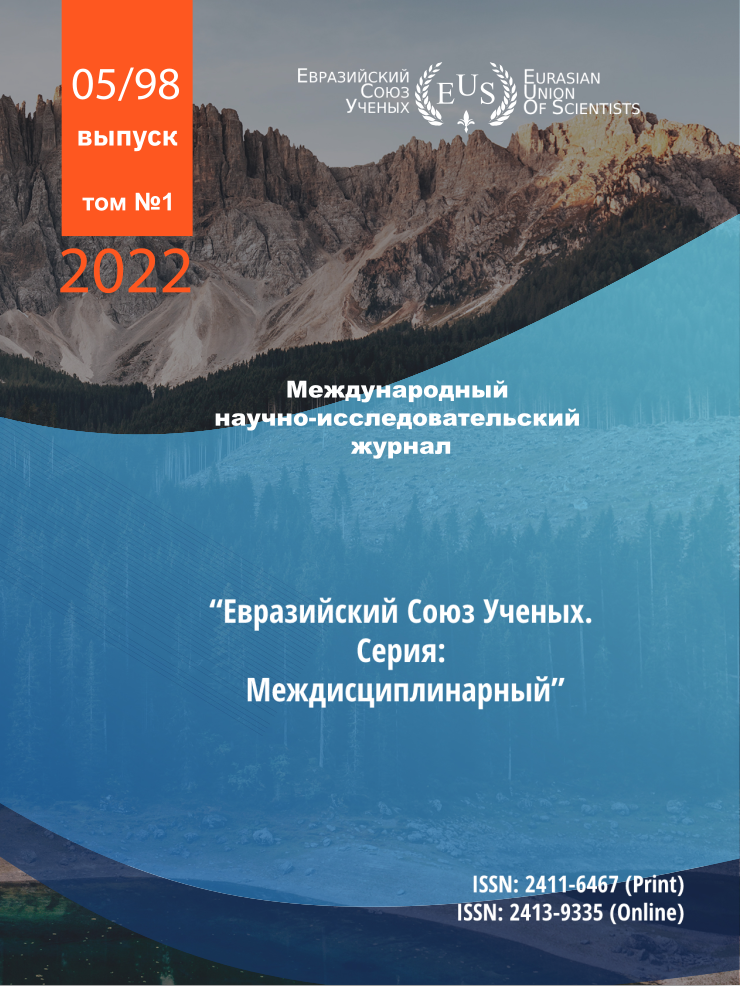INFLUENCE OF BIOSTIMULATORS ON BIOMETRIC INDICATORS, QUALITY AND PRODUCTIVITY OF WATERMELON IN THE CONDITIONS OF THE SOUTH-EAST OF KAZAKHSTAN
Abstract
This scientific article presents the results on the influence of biological stimulators of plant growth and
development on biometric indicators, biochemical composition and productivity of watermelon culture in the
conditions of the southeast of Kazakhstan. It was established that the largest watermelon fruits were formed on
stimulants: BioZZ, 5 l/ha (A.5) - 19.7 cm and 1284.9; Blackjack, 0.7 l/ha (A.2) - 19.7 cm and 1315.1 grams;
Gibbersib, p., 30 g/kg (A.9) - 19.9 cm and 1265.7 and MERS, 1.2 l/ha (A.4) - 20.2 cm and 1318.5 grams.
A high total sugar content was noted on the BlackJack variants, 0.7 l/ha (A.2); Gibbersib, p., 30 g/kg (A.9);
MERS, 1.2 l/ha (A.4) and Atonik Plus, w.r., 0.2 l/ha (A.8) - from 17.08 to 17.34%; ascorbic acid - on the variants:
Gibbersib, p., 30 g / kg (A.9) - 10.06 mg%; MERS, 1.2 l/ha (A.4) - 10.08 mg%; BioZZ, 5 l/ha (A.5) - 10.71 mg%
and Atonic Plus, w.s., 0.2 l/ha (A.8) - 10.78 mg%; dry soluble substances - from 11.32% to 13.25% on options
A.2-A.10. The indicator of NO3-N content in watermelon fruits was 38-71 mg per 1 kg of wet weight, depending
on the variants of the experiment.
The highest indicator of fruit productivity among those studied was obtained in experiments where
watermelon was cultivated with Terra-Sorb, 1.2 l/ha (23.24 t/ha), MERS, 1.2 l/ha (23.90 t/ha). ha) and Atonic Plus,
w.r., 0.2 l/ha (24.33 t/ha).
Scientific experiments were included and held at the experimental sites of the regional branch “Kainar” of
Food and Vegetable Research Institute LLP during the period 2020-2021.
So, classical research methods, generally recognized in melon cultivation, were used in experiments.
The research was made within grant project for postdoctoral scholars for 2020-2022, using Unique Record
Number: AР 08052493.
References
2. Kızılkaya, R. Dehydrogenase activity in Lumbricus terrestris casts and surrounding soil affected by addition of different organic wastes and Zn. Bioresource Technology. 2008; 99(5), 946-953. http://dx.doi.org/10.1016/j.biortech.2007.03.004.
3. Gülser C., Candemir, F. Effects of agricultural wastes on the hydraulic properties of a loamy sand cropland in Turkey. Soil Science and Plant Nutrition. 2015; 61(3): 384-391.
https://doi.org/10.1080/00380768.2014.992042.
4. Kızılkaya, R., Hepşen, Ş. Microbiological properties in earthworm Lumbricus terrestris L. cast and surrounding soil amended with various organic wastes. Communication in Soil Science and Plant
Analysis. 2007; 38(19-20), 2861-2876. http://dx.doi.org/10.1080/00103620701663107.
5. Aitbayev T.E., Mamyrbekov Z.Z., Aitbayeva A.T., Turegeldiyev B.A., Rakhymzhanov B.S. The influence of biorganic fertilizers on productivity and quality of vegetables in the system of "green" vegetable farming in the conditions of the south-east of
Kazakhstan. OnLine Journal of Biological Sciences 2018; 18(3): 277-284.
6. Massri M., Labban L. Comparison of different types of fertilizers on growth, yield and quality properties of watermelon (Citrllus lanatus). Agricultural Sciences. 2014; 5:475-482.
http://dx.doi.org/10.4236/as.2014.56048
7. Ahmad H., Al-Fraihat. Effect of mineral nitrogen and biofertilizer on the productivity and quality of melon plants in South Ghor Area, Jordan. International Journal of Current Research. 2011; 33(6): 295-303.
8. Medved'ev G.A., Tarasova E.M. Rezul'taty primenenija biologicheskij aktivnyh veshhestv pri vozdelyvanii bahchevyh kul'tur. Izvestija Nizhevolzhskogo AUK. 2010; 1(17): 4.
9. Dospehov B.A. Metodika polevogo opyta (s osnovami statisticheskoj obrabotki rezul'tatov issledovanij). Moskva: «Kolos». - 1985. S. 418. Evrazijskij Sojuz Uchenyh. Serija: mezhdisciplinarnye nauki. #5(98), 2022 9
10. Belik V.F. (red.). Metodika opytnogo dela v ovoshhevodstve i bahchevodstve. Moskva. - 1992. S. 320.
11. Metodicheskie ukazanija po provedeniju registracionnyh ispytanij fungicidov, protravitelej semjan i biopreparatov v
rastenievodstve. Almaty-Akmola. - 1997. S. 30.
12. Chambial S., Dwivedi S., Shukla K.K., John P.J., Sharma P., Vitamin C in Disease Prevention and Cure: An Overview. Indian Journal of Clinical Biochemistry. 2013; 28: 314-328. https://doi.org/10.1007/s12291-013-0375-3.
CC BY-ND
A work licensed in this way allows the following:
1. The freedom to use and perform the work: The licensee must be allowed to make any use, private or public, of the work.
2. The freedom to study the work and apply the information: The licensee must be allowed to examine the work and to use the knowledge gained from the work in any way. The license may not, for example, restrict "reverse engineering."
2. The freedom to redistribute copies: Copies may be sold, swapped or given away for free, in the same form as the original.







